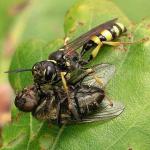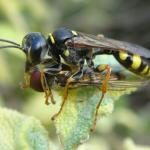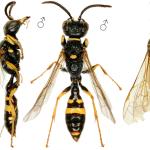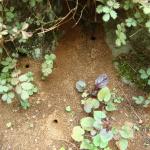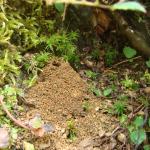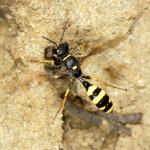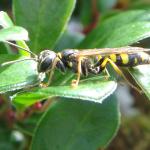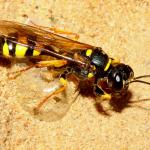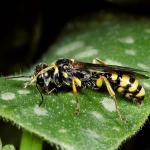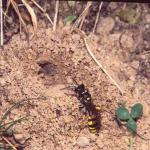A common and widely distributed species in Britain and Ireland. A very common species, but its distribution is restricted to European countries, with the exception of Mediterranean areas.
This species is not regarded as being scarce or threatened.
Sandy localities, frequently coastal.
Univoltine; June to September.
Diptera, particularly Muscidae (s.l.), Syrphidae and Tabanidae. Prey is sometimes hunted on mammalian droppings. The female wasp walks over the droppings and with a sudden leap, seizes the fly in her mandibles; immobilises it with a sting, and then flies with it to her nest (Lomholdt, 1975-76). May also take basking flies from fences and tree trunks (M Edwards, pers. comm.).
The nests are constructed in sandy soil, not infrequently in aggregations. Some nests have been found under paving slabs (usually laid on sand) (Shaw & Pont, 1971). The soil accumulated from digging the burrow is not dispersed by ritualised, instinctive behaviour on the part of the wasp, but is left to form a tumulus (G W Allen, pers. obs.). The burrow goes down 30-40 cm almost vertically and there may be one or several cells. Each cell is provisioned with four to thirteen flies, the egg being laid on the first of these (Lomholdt, 1975-76). Nests are frequently established in shady locations, an unusual habit for an aculeate (M Edwards, pers. comm.).
No information on flowers available, but G R Else (pers. comm.) has seen many wasps of both sexes running over sycamore leaves, presumably searching for honeydew from aphids.
Known parasites in Europe are miltogrammine flies in the genera Macronychia and Senotainia (Lomholdt, 1975-76).
1998
Proofed: March 2012


